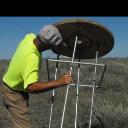Yahoo Answers is shutting down on May 4th, 2021 (Eastern Time) and beginning April 20th, 2021 (Eastern Time) the Yahoo Answers website will be in read-only mode. There will be no changes to other Yahoo properties or services, or your Yahoo account. You can find more information about the Yahoo Answers shutdown and how to download your data on this help page.
Trending News
Why did the American bombers target Nagasaki ?
17 Answers
- 12 months ago
From the beginning, the target for the second atom bomb was supposed to be Kokura.... The weather over Kokura was bad and it could not be seen from the airplane, the crew went on to their secondary target- Nagasaki. The crew were unable to return to Kokura or any other city because fuel was low, so Nagasaki was bombed.
Nagasaki had a Mitsubishi steel factory
- FredLv 512 months ago
Aug 9. 1945 Kukura the primary atomic weapon city target is cloud coved, Nagasaki is the next 'secondary' target.
Nagasaki a steel and torpedo production center spattered about several islands and thin costal regions, not an ideal target for conventional bombing nor atomic bombing???????
So why are the bombing plans so focused on Nagasaki? There are other steel centers, other ordinance production sites? And particularly why is all the focus on a Mitsubishi-Urakami torpedo production plant?
Japan is producing torpedo's and hasn't a navy ship that can leave the port of Nagasaki? Still Japan is producing torpedo's hell bent for election around the clock?
Japan's greatest defense has centered around the Kamikaze. The Kamikaze has claimed more Allied lives than any other single Japanese effort COMBINED!!!
What Japan was planning to do with all those speedily produced torpedo's History is denied opportunity? Perhaps that single loss of torpedo plant and mountains of stored torpedo's had as much to do ending the war as Japan's loss of all the Manchurian war industries; lost to the Soviets' long before Charles Sweeny rolled out of his Tinian early morning rack in a Soviet invasion starting 12:01 am Aug 9,1945!
- How do you think about the answers? You can sign in to vote the answer.
- JosephLv 712 months ago
The mission primary target was Kokura and Nagasaki was the secondary target. The targets were chosen because there were large military related industrial plants located there and also those cities, up until then. were spared large scale bombing raids.
A B-29 44-27297 Bockscar was the bomb-carrying aircraft. Major Charles Sweeney was the aircraft commander, and Commander Frederick Ashworth, USN was in charge of the bomb and a mission commander. Two additional bombers, The Big Stink and the Great Artiste would accompany it for photographic and instrumentation and observation support.
Before the departure it was found that a pump used to transfer fuel from a reserve tank on the Bockscar was inoperative. It would have taken several hours to replace the pump; moving the bomb to another plane would have taken just as long, so Col. Tibbets, the squadron CO and Sweeney decided to launch the mission anyway. Bockscar was supposed to be accompanied by two additional bombers for instrumentation, observation and photography.
When Bockscar reached the rendezvous point only the Great Artiste arrived. The pair held at the rendezvous for an additional half an hour waiting for The Big Stink but it failed to appear. They then proceeded to Kokura, the mission's primary target.
While the bombers held at the rendezvous point, the weather planes launched earlier reported good weather over Kokura and Nagasaki. However, by the time the pair arrived over Kokura clouds and smoke from an earlier bombing raid on Yahata obscured the target. Over the next 50 minutes Sweeney made three unsuccessful bombing runs repeatedly exposing the aircraft to heavy anti-aircraft fire. With fuel situation aboard the Bockscar now getting serious, and increasing chatter on the radio frequencies used by the Japanese fighters, the two bombers proceeded to Nagasaki.
When the bombers reached Nagasaki they also found that clouds obscuring their target. Ashworth decided to drop using the using the bomber's early version of synthetic aperture radar. However, just as Bockscar was nearing the end of its bombing run a small opening in the clouds appeared, allowing the bombardier to visually drop the bomb.
With fuel situation now critical, Sweeney decided to land at Okinawa instead of trying to reach the planned landing field at Iwo Jima. Upon reaching Okinawa Sweeney circled the field for 20 minutes while unsuccessfully trying to contact the control tower before coming in to land without clearance. One engine stopped due to fuel starvation on final approach; on landing the Bockscar almost sideswiped a row of parked B-24 bombers; and then nearly did a ground loop to keep from going off the end of the runway. A second engine shut down due to fuel starvation before the aircraft came to a full stop.
- DaveLv 512 months ago
The original target was Kokura, but cloud-cover prevented it. Nagasaki was the secondary target. I saw a documentary about the Atomic Bomb, and one survivor in Hiroshima had an interesting observation. She wondered why Hiroshima was spared any bombing up to that point, and wondered, "Are we being held off for a special purpose?" She said it ominously, as if they were going to get the worst, and her hunch was right. The people of Nagasaki may have felt the same way.
- ?Lv 712 months ago
Because of clouds and smoke over their primary target of Kokura, after three bomb runs and running,low on fuel they headed for their secondary target, Nagasaki..
- curtisports2Lv 712 months ago
Because the Japanese refused the ultimatum of surrender after Hiroshima was hit. The US targeted cities of strategic importance to the Japanese production of war materiel rather than use nuclear weapons on Tokyo, which would have killed far more people, had less strategic impact and truly horrified the rest of the world , even more than it was. It probably would have backfired towards the diplomatic future. Hirohito and his generals understood that the Americans could have done so much worse and chose not to.
- BortLv 712 months ago
They were targetting major sea and industry ports. Nagasaki was one of them, so was Hiroshima.
- ANDRE LLv 712 months ago
Nagasaki during World War II
Formal picture of ten men in uniform. The five standing are wearing ties, and all but one of the ten wears a peaked cap or garrison cap.
The city of Nagasaki had been one of the largest seaports in southern Japan, and was of great wartime importance because of its wide-ranging industrial activity, including the production of ordnance, ships, military equipment, and other war materials. The four largest companies in the city were Mitsubishi Shipyards, Electrical Shipyards, Arms Plant, and Steel and Arms Works, which employed about 90% of the city's labor force, and accounted for 90% of the city's industry.[186] Although an important industrial city, Nagasaki had been spared from firebombing because its geography made it difficult to locate at night with AN/APQ-13 radar.[120]
Unlike the other target cities, Nagasaki had not been placed off limits to bombers by the Joint Chiefs of Staff's July 3 directive,[120][187] and was bombed on a small scale five times. During one of these raids on August 1, a number of conventional high-explosive bombs were dropped on the city. A few hit the shipyards and dock areas in the southwest portion of the city, and several hit the Mitsubishi Steel and Arms Works.[186] By early August, the city was defended by the 134th Anti-Aircraft Regiment of the 4th Anti-Aircraft Division with four batteries of 7 cm (2.8 in) anti-aircraft guns and two searchlight batteries.[115]
In contrast to Hiroshima, almost all of the buildings were of old-fashioned Japanese construction, consisting of timber or timber-framed buildings with timber walls (with or without plaster) and tile roofs. Many of the smaller industries and business establishments were also situated in buildings of timber or other materials not designed to withstand explosions. Nagasaki had been permitted to grow for many years without conforming to any definite city zoning plan; residences were erected adjacent to factory buildings and to each other almost as closely as possible throughout the entire industrial valley. On the day of the bombing, an estimated 263,000 people were in Nagasaki, including 240,000 Japanese residents, 10,000 Korean residents, 2,500 conscripted Korean workers, 9,000 Japanese soldiers, 600 conscripted Chinese workers, and 400 Allied prisoners of war in a camp to the north of Nagasaki.[188]




